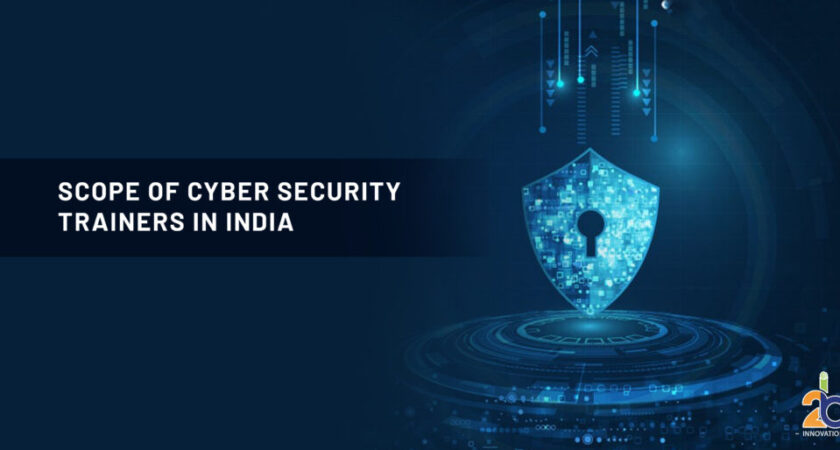In a world where digital shadows dance a sinister ballet, the cyberspace defenders stand firm, shields raised against a barrage of unseen threats. These guardians, more than just warriors of ones and zeros, are the cybersecurity trainers, the whisperers in the code, and the alchemists who transmute raw knowledge into digital armor. Their scope stretches far beyond the firewall, spanning the vast landscape of human vulnerability, fortifying minds as much as networks.
From fledgling recruits navigating the labyrinthine alleys of the dark web to seasoned veterans honing their digital katana, the trainer’s hand guides, inspires, and ultimately equips the next generation of cyber sentinels. This is their story, an odyssey through the intricate tapestry of knowledge, skill, and resilience that defines the scope of a cybersecurity trainer.
Prepare to delve into the hidden trenches of this digital war, where the true battleground lies not in servers, but in the human mind itself.
From Newbies to Defenders: Demystifying Cybersecurity Training for all Levels
In the ever-evolving landscape of cybersecurity, the role of trainers extends beyond mere instruction; it involves demystifying the complex realm of digital defense for individuals at all proficiency levels. Cybersecurity trainers play a pivotal role in shaping the skills and mindset of diverse audiences, ranging from novices to seasoned professionals.
1. Tailoring Training for Novices
At the forefront, cybersecurity trainers engage with novices, individuals with little to no prior experience in the field. These training sessions are designed to be approachable and digestible, breaking down intricate concepts into understandable components. From introducing the basics of encryption to demystifying the jargon surrounding malware, these sessions set the foundation for budding enthusiasts, laying the groundwork for a robust understanding of cybersecurity fundamentals.
2. Intermediate Expertise: Building on the Basics
For those with a foundational understanding, cybersecurity trainers pivot towards refining and expanding knowledge. Intermediate-level training encompasses a deeper exploration of topics such as network security, penetration testing, and incident response. Trainers guide participants through hands-on exercises, cultivating practical skills and promoting critical thinking. This phase bridges the gap between introductory concepts and the complexities encountered by cybersecurity professionals in real-world scenarios.
3. Advanced Techniques: Nurturing Cyber Defenders
Seasoned professionals seeking to enhance their expertise find themselves under the guidance of cybersecurity trainers specializing in advanced techniques. Here, the focus shifts to intricate aspects of ethical hacking, threat hunting, and advanced security protocols. Trainers engage participants in simulated cyber-attacks, providing a dynamic environment to apply theoretical knowledge. The goal is to mold these individuals into adept cyber defenders capable of navigating the sophisticated tactics employed by malicious actors.
4. Specialized Training for Niche Areas
Recognizing the diversity within cybersecurity, trainers often offer specialized courses catering to niche areas such as industrial control systems security, cloud security, and mobile device security. These tailored programs address the unique challenges associated with specific domains, ensuring that professionals are well-equipped to safeguard varied technological landscapes.
5. Inclusivity Beyond Technical Expertise
Cybersecurity training extends beyond technical proficiency, emphasizing a holistic approach to defense. Trainers instill a proactive mindset, emphasizing the importance of ethics, legal considerations, and effective communication in addition to technical skills. This inclusivity ensures that cybersecurity professionals not only possess the technical know-how but also understand the broader implications of their roles in a constantly evolving digital ecosystem.
6. Continuous Learning: Adapting to the Threat Landscape
The dynamic nature of cyber threats necessitates continuous learning. Cybersecurity trainers facilitate ongoing education through workshops, webinars, and collaborative forums. This ensures that defenders remain abreast of the latest threats, vulnerabilities, and countermeasures, fostering a culture of adaptability and resilience.
Beyond Technical Mastery: The Essential Soft Skills Every Cybersecurity Trainer Needs
In the realm of cybersecurity training, technical prowess is undeniably crucial, but the landscape demands more. Effective trainers recognize that the human element is as vital as code proficiency.
1. Mastering the Art of Communication:
Cybersecurity trainers must translate complex technical jargon into digestible insights for diverse audiences. Clear communication bridges the gap between experts and novices, fostering a comprehensive understanding of cybersecurity concepts. Whether articulating threat scenarios or explaining preventive measures, the ability to convey information is paramount.
2. Empathy as a Teaching Tool:
Understanding the challenges faced by learners is fundamental to effective training. Empathy allows trainers to tailor their approach, adapting to varying skill levels and learning styles. Recognizing the anxiety that can accompany cybersecurity learning, empathetic trainers create a supportive environment that encourages questions, experimentation, and ultimately, skill mastery.
3. Fostering Engagement for Lasting Impact:
Beyond disseminating information, successful cybersecurity trainers actively engage their learners. Interactive sessions, hands-on exercises, and real-world simulations not only enhance understanding but also instill a sense of urgency and relevance. By cultivating an engaging learning atmosphere, trainers inspire a proactive mindset, preparing individuals to navigate the ever-evolving threat landscape.
Evolving Threats, Evolving Training: Navigating the Shifting Landscape of Cybersecurity Education
In the ever-changing landscape of cybersecurity, where threats mutate and evolve with unprecedented speed, the role of cybersecurity trainers becomes even more critical. As technology advances, so do the tactics employed by cybercriminals. This subheading sheds light on the imperative for cybersecurity trainers to remain agile and innovative in their educational approaches.
Adapting to Emerging Threat Vectors
Cyber threats are not static entities—they adapt, diversify, and exploit new vulnerabilities. A cybersecurity trainer’s role is to stay one step ahead by incorporating the latest threat intelligence into their curriculum. Whether it’s ransomware, phishing, or zero-day exploits, trainers must equip their students with real-time knowledge to fortify defenses.
Dynamic Teaching Methodologies
Traditional teaching methods may fall short in the fast-paced world of cybersecurity. Trainers need to embrace dynamic approaches, incorporating hands-on exercises, simulated attacks, and scenario-based learning. By mirroring real-world situations, trainers prepare their students not only to understand theoretical concepts but to apply them effectively in the face of evolving threats.
Fostering a Continuous Learning Culture
Cybersecurity is not a one-time lesson; it’s an ongoing journey. Trainers play a pivotal role in instilling a culture of continuous learning among their students. This involves promoting curiosity, self-directed exploration, and engagement with the broader cybersecurity community. By fostering a mindset of adaptability and curiosity, trainers empower their students to navigate the ever-shifting landscape independently.
Conclusion
In conclusion, the symbiotic relationship between evolving threats and adaptive training methodologies underscores the indispensable role of cybersecurity trainers. As guardians of digital resilience, they navigate the dynamic landscape, ensuring that their students not only grasp theoretical concepts but embody a culture of continuous learning. In this ever-changing cybersecurity realm, trainers stand as beacons, guiding the next generation toward a future fortified against emerging threats.

